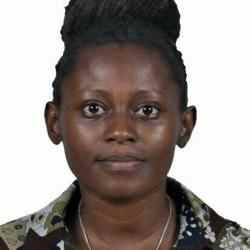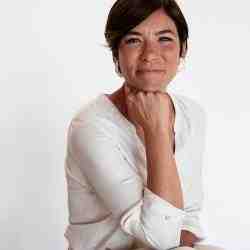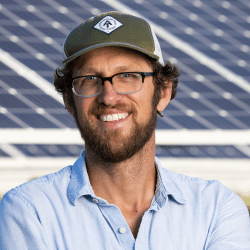Introduction
Through Edible Garden City, Bjorn has been leading a grow-your-own-food movement to change the Singaporean mindset around farming. He is inventing a new way of integrating urban farming into the cityscape and using it as a community-building tool. He leads a sizeable “farm-lab” in the city that incubates other start-up and encourages more urban farming entrepreneurs to pilot urban food and waste solutions.
The New Idea
Bjorn is convinced that in order to build a more sustainable city able to be food resilient, urban farming needs to be reinvented and more community-oriented, meaning people need to change their mindset around farming and food by switching from a consumerist attitude to a resilient one. He has been inculcating a culture of grow-your-own-food by helping them reconsidering the potential of their limited yet promising land, in terms of available spaces but also it terms of bringing back local species to the table.
Through his organization, Edible Garden City, he has been inventing a new way of integrating urban farms into the cityscape. He uses it as a tool for communities to assume their role in the food resilience pursuit, allowing them to directly benefit from the positive impacts of gardening, thanks to a decentralized model of pop-up farms that is accessible to everyone everywhere in the city. This model, called “Citizen Farm”, wholly respects thus relies on the cycle of food: from growing it to composting its waste, making a powerful and efficient close loop able to provide healthy food for a neighbourhood and dealing with its food waste at the same time. He gives his model the way to flourish and be the norm by working in partnership with the government and creating an entire ecosystem of “agripreneurs” and community gardeners all willing to transform the city into a more sustainable and inclusive space, and all convinced that gardening is about food and not about land property.
Thanks to a patient strategic drive to implement those practices in a culture where the interest was latent to averse, Bjorn has managed to build farms that play a role of community hubs able not only to produce diversified food as an actual food provider, but simultaneously to give job opportunities to differently abled communities and be spaces of research, education and connection with nature for every urban dweller.
The Problem
Since its independence in 1965, Singapore has known one of the most rapid urbanization in the world, bringing about drastic changes in people’s lives in only a couple of decades, one of them being a profound disconnection with nature and agriculture. Singapore imports 90% of its food today. This is partly due to drastic policy measures that have constrained farms to give way to industrial development, public housing and water catchments. Since 1960, 15,000 hectares of farmlands that were long part of local history and culture have shrunk to 600 hectares today.
At the same time, Singapore has seen its level of food waste increased by 40% in the past ten years, generating 7.6 million tonnes of waste in 2016, only 13% of it being recycled. This does not only pose a problem of landfill land constraint but also of enormous economic, societal and environmental significance. Globally, if food waste is most of the time related to hunger and food accessibility, it also happens to play a significant role in the global carbon footprint, since if food waste was a country it would rank as the third biggest issuing country of the world. One of the reasons why Singapore has been experiencing an exponential raise of food waste, like other cities in the world, is that urban dwellers have lost the connection with land and farming only in a couple of decades. Indeed, this vanishing of agriculture has led to a lack of understanding of the realities of food production and even to misconceptions about farming, that it is dirty and old-fashioned.
Besides, the production of food has increasingly become seen as the responsibility of government, which has almost a monopoly on problems solving; people rely on it as the source of resilience. Aware of the emergency to preserve and encourage local production, the Singaporean government has been supporting mostly if not entirely farmers engaged in the construction of food-generating towers that used technological innovation and reinforcing the priorities of productivity and efficiency. The best example of it is Sky Green, the world’s first low carbon, hydraulic driven vertical farm, born in Singapore and now known all over the world. As a result, Singaporean urban food production is destined to be mostly corporate, technology-and-business oriented, and mainly focused on yield through vertical farming as a response to land constraints.
Bjorn is convinced this answer to the problem is incomplete and misses an opportunity to enlarge the system and make it healthier for people and the environment. He deeply believes that the growing of food shouldn’t be the exclusive property of “agri-specialists” but a common purpose of the community and “agripreneurs”. Vertical farming will certainly increase the national food supply but will prevent the potential to unleash the educational, therapeutic, and community convening powers that have always been part of growing food.
The Strategy
Edible Garden City’s first step has been to make the case for small scale farming, by establishing a commercial activity that not only made the activity self-sufficient but above all that allowed Bjorn to demonstrate that urban farming was possible, profitable and had a potential social impact.
Bjorn’s first target has not been chosen randomly: detecting a potential demand among international chefs wanting to adhere to the local and fresh food movement, he started out setting up edible gardens for them. Getting chefs on board, as the most ardent supporters of his initiative gave Bjorn the opportunity to quickly gain more notoriety – exacerbated by a wide media coverage presenting him as a successful entrepreneur- and to transform farming into a more glamorous initiative in a city-state where food is sacred. As an extend, today Edible Garden City provides fresh herbs and vegetables also for the skin care sector, is about to launch a weekly vegetable bundle for consumers, and has been “food scaping” more than 60 edible gardens all over the city, for restaurants and hotels – for instance, the Singapore iconic hotel Marina Bay Sands-, on rooftops of office buildings, private and public housing, in schools and even in a prison. In only 5 years, Edible Garden City has clearly contributed to the democratisation of urban farms as a constitutive part of the city. As a result, the Urban Redevelopment Authority (URA), to provide a quality living environment and as a strategy to strengthen biodiversity in the city, has announced in 2017 that rooftop urban farms (among other greenery initiatives) would be now part of their incentive programme launched in 2009 to urge developers and building owners to integrate greenery in their projects, through a gross floor area exemption that could represent significant cost savings for them.
Every edible garden Bjorn has built has been an opportunity to underline the power of his idea. Each time he has been building a garden somewhere, it systematically attracts people’s interest and even volunteers: 500 people have been engaged in different projects so far. A good example that demonstrates people’s actual interest is the 150 square meters edible garden at the rooftop of the Singapore Power Group building, manned by a group of 44 staff volunteers who take turns to maintain the crops in the plot assigned to them and harvest the produce. He has also demonstrated urban farming’s ability to create new roles for marginalized communities by hiring socially disadvantaged individuals (autistic people, people suffering from the Down syndrome), using his gardens as a platform to train and employ them. The gardens thus extend the capacity of organizations that serve them, and Bjorn is even planning to enlarge the number of beneficiaries.
Due to his persistent step-by-step strategy and thanks to the success and profile of his work, Bjorn has gained credibility, influence and trust among public agencies, that started to open their mind about the way they were considering urban farming, more and more convinced of the community convening power of his offer. The most iconic example of his leverage is the way his successful experiment on an unutilized rooftop carpark in the middle of the city, working with elderly people, has influenced the government to replicate the model. Indeed, right after the end of the experiment, the government announced that every new public housing estates would have to set a community farm on its top. Regarding the fact that public housing estate represents 80% of the housing in Singapore, this announcement traduces the government understanding and interest in Bjorn’s work.
Consequently, in 2017, the government of Singapore gave Bjorn the opportunity to finally experiment what he had in mind since the beginning of his journey: the launch of an expanded demonstration of his new urban farming model. Attracted by Edible Garden City’s compelling case of a socially driven urban farm, the Ministry of National Development decided to forgo the traditional tender for land attribution. Thus, Bjorn obtained to lease a 9,000 square meters plot right in the middle of the city as a direct award, making the government almost going against its own strategy to shrink farm lands and to concentrate the efforts on vertical farming. “Citizen Farm” is a production driven farm that integrates natural systems with modern technology to grow diversified food (mushrooms, leafy greens, herbs, micro greens, tomatoes…), unlike most of the urban farming initiatives, mainly monocrop. This new model is designed to purposely tackle three main urban challenges: food waste, urban planning and land scarcity, and isolation of certain part of the population. These design characteristics detailed right after makes it very unique yet replicable in every urban setting context, beyond Singapore.
Firstly, Citizen Farm is a closed-loop urban farming system using hydroponics, aquaponics and insect farming technologies. In other words, the model features an array of different farming systems which grow the best quality produce with the least amount of waste; taking coffee waste to become mushrooms, food waste to become insect feed, waste generated from production to become an ingredient to another system. As an example, the farm has been using black soldiers flies by feeding the insect larvae with food waste from restaurants and supermarkets, turning this into nutrient-rich fertiliser. By putting back food waste into the equation of food cycle, using it as a resource for a new urban farming system, Bjorn is offering a unique place where food can be grown organically and recycled at the same time and place, everywhere in the city.
Moreover, Bjorn knew that if he wanted to get the government on board and be allowed to develop his farms on temporary unused space or land, he had to create a model that matched with urban planning concerns and that was adaptable to the city evolution in terms of housing, industry (etc.). That is why he created a portable model of “pop-up” farm. The nimble and dynamic premises are designed to be transitional, meaning that the infrastructure is easily removable to somewhere else at the end of the lease, thus avoiding any entrenchment issues feared by the government. Consequently, city farmers can start to be considered as food grower instead of landowner, which shifts considerably the way farming is regarded by urban dwellers.
Last but not least, the farm has been thought to be a platform to train and employ marginalized communities on urban farming work processes so that they can become competent to be part of the workforce of the future farming industry, since his ambition is to disseminate his new model of farm through the city and it will take skilled labor.
Because he wanted to make his movement more impactful and lead the industry towards this new vision of urban farming, Bjorn has decided to drive Citizen Farm as a “farm-lab”, incubating 5 other like-minded urban farming start-ups (indoor and outdoor agriculture, insect farming, aquaculture, vertical growing, mushroom cultivation from coffee waste). Thus, Citizen Farm is not only a farm but a whole ecosystem of farmers willing to bring community and agriculture together for Singaporeans towards more resilience, sharing the same vision of what urban farming can bring to the society. As an example of this unity, every entity hosted by Citizen Farm hires people from marginalized community.
In parallel, convinced that farming would be a nature part of Singaporean society only if he educates people, Bjorn has been reaching out 2,500 people and students throughout workshops, conferences and educational programs in 40 schools (from preschools to tertiary). Most of the school projects are concrete and participative, starting with creating a food garden all the way to packing and selling produce at the school’s farmers market. He has been working with the current education system by incorporating gardening into school curriculum, not only as a subject itself but also as a tool to teach other subjects like mathematics, history, chemistry etc. He helps teachers using the educational value of gardening, as life lessons, and is planning to reach all the Singaporean public schools by having engaged initial discussions with the Curriculum Development Department of the Ministry Of Education. He is also going to influence and build the next generation of professional urban farmers through official vocational training by opening a Urban Farming School in the Citizen Farm grounds next year, partly relying on a collaboration with displaced or retired Singaporean farmers that are owning the knowledge on how growing food in such a tropical climate, and would otherwise leave with it.
Passing his knowledge and believes to multiple actors will allow him to strengthen his movement and above all will make the scaling up possible. Indeed, as he sees it, Edible Garden City is going to disseminate all over the city, by keeping spreading his edible gardens on rooftops (45,000 square feet rooftops already identified) and at the same time replicate his Citizen Farm through a social franchising model, in a 5 year time horizon. The support he obtained to prototype his close loop system through a seed grant from the Temasek Foundation (gathering endowments of the Singaporean sovereign fund Temasek) will certainly help him discuss with the government the access to 50 viaducts, 108 community centers, 353 government supported schools already identified by his team. It will constitute a 400,000 square feet of growing space, allowing to develop 6000 close loop farming units producing 80,000 tonnes per year, enough for Singapore to be self-sufficient in leafy greens and to reduce food waste by about 25%, according to his estimations.
Bjorn won’t stop the scaling up there, since he is already contemplating the idea of spreading is model beyond Singapore in cities like Jakarta, Bangkok or Hong-Kong. He is an active player of the international urban farming scene, being a speaker to several international conferences to share his experience and learn from his peers. Besides, he has already started to build a network able to help him replicate his model in South-East Asia, his rapprochement with a like-minded urban farming social enterprise in Hong-Kong or with an Indonesian NGO dealing with sustainable development training for communities reflects this dynamic.
The Person
Bjorn grew-up in a traditional Singaporean Chinese family of entrepreneurs, then studied business, trying to conform to high excellence expectations coming from a society where success goes together with business. After 5 years as a digital marketer, he moved to London, to pursue his career. England has been an actual discovery for him: he enjoyed the great presence of nature, experienced the impact of seasons and realized the human power of gardening, all concepts that were inaccessible in Singapore. Meanwhile, life in London had a great influence on raising his awareness on environmental issues like climate change, failure in food systems and importance of farming since the media’s influence on these topics were growing regarding the 2012 Olympics in the city.
This journey leaded Bjorn to start questioning himself about his path and realizing he wanted to pursue a more natural and sustainable lifestyle, then ending to conform to a Singaporean mould he never felt he fit into. Despite social and family pressure, he decided to quit and spent 2 years travelling around the world through the Organic Farms international volunteer network. He came back with the conviction that farming had a strong social and environmental power and with the determination he wanted to do something with it. As a start, he got diploma in Biodynamic agriculture in Britain, keeping in mind the dream of running his own farm with his wife, certainly in Wales since he knew it was quite impossible to do so in Singapore. Nevertheless, he could not help feeling an urgent need and even a responsibility to share what he had learnt with his fellow citizens, to bring the benefits of agriculture back home.
Aware of the level of the challenge he was wanting to undertake, Bjorn decided to give himself only two years, giving up his family dream for a while, to offer his idea a chance to emerge. He created Edible Garden City in 2012, and jumped on the opportunity offered by the farm-to-table movement to start working with chefs inspired by the movement. Day after day, by making the case instead of advocating, Bjorn opens every door by using his entrepreneurial and marketing skills and finding the right leverages to reassure people and government in a city-state with a culture that has inclined to another solution and where business and productivity are the master words. After only five years, he is recognized as a key player in the urban farming local but also international scene, and ambitions to tackle the global food system failure.

 Tile image
Tile image


